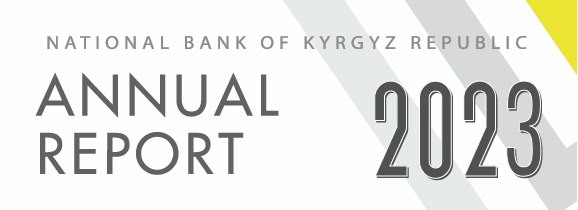Appendix to
Resolution No. 21/13 of
the National Bank of the
Kyrgyz Republic Board
as of May 31, 2017
REGULATION
on Requirements for the Financial Statements Formed by
the Commercial Banks that Conduct Operations under the Principles of Islamic Banking and Finance
(As amended by Resolution No.2020-П-12/8-7-(RLA) of the National Bank of the KR Board dated February 26, 2020)
Chapter 1. General Provisions
1. This Regulation determines the composition, content and basic rules for the financial statements formed and submitted by the commercial banks carrying out operations under the Principles of Islamic banking and finance (hereinafter referred to as the Islamic bank), banks having an “Islamic window”, a parent company (head company) of the banking group to the National Bank of the Kyrgyz Republic (hereinafter referred to as the NBKR).
The financial statements of the banking group are presented on a consolidated basis by the parent company of the banking group (hereinafter referred to as the consolidated financial statements of the banking group).
The requirements of this Regulation apply to the parent companies (head companies) - residents of the Kyrgyz Republic.
2. The financial statements of an Islamic bank are a structured presentation of the financial position and the result of activity for the reporting period.
3. The financial statements of the Islamic bank should present its financial position objectively and comply with the standards of the Accounting and Auditing Organization for Islamic Financial Institutions (hereinafter referred to as AAOIFI), and in the absence of certain standards, the bank may use the IFRS standards, provided that they are not will be contrary to the Sharia’h standards approved by the AAOIFI.
The financial statements of a bank that have an “Islamic Window” shall be submitted in accordance with Chapter 11 of this Regulation.
(As amended by Resolution No.2020-П-12/8-7-(RLA) of the National Bank of the KR Board dated February 26, 2020)
4. The purpose of the financial statements of an Islamic bank is follows:
1) providing reliable information through periodic reports on the financial position, financial performance and cash flow of an Islamic bank, which is useful for the users when making economic decisions;
2) presentation of information on assets, liabilities, funds on investment accounts, capital, income and expenses (including profits and losses) and cash flows;
3) presentation of information on an Islamic bank’s compliance with the principles of Shari'ah, as well as on the activities undertaken by an Islamic bank to comply with these principles, including information on the use (distribution) of profits and losses received on the operations that do not comply with the Sharia’h Standards, if any;
5. The accounting policy of an Islamic bank, approved by the Board of Directors and the Sharia’h Council, shall comprise the Procedure for formation of the Islamic bank’s financial statements.
6. The Islamic bank, which is in the temporary administration mode, also presents financial statements as specified herein.
Chapter 2. General Requirements for Financial Statements and Its Composition
7. Financial reports shall reflect all information necessary for the users, which shall be adequate and reliable.
8. Financial statements of an Islamic bank shall include as follows:
1) statement of financial position;
2) statement of comprehensive income;
3) statement of changes in equity;
4) statement of cash flows;
5) statement on the sources of formation and use of Quard cash funds;
6) conclusion of the Sharia’h Council;
7) accounting policy and notes to the financial statements;
8) statement of financial position as of the beginning of the earliest comparative period
Explanatory note (disclosed) to the financial report shall be succinct and understandable, and also shall have a cross-reference to the relevant items of the financial report, if necessary. The explanatory note (disclosed) attached to the financial statements is an integral part thereof.
9. For the purposes of financial statements, the reporting period for an Islamic bank shall be the period from January 1 till December 31 inclusive of the calendar year.
10. For the newly established Islamic bank, the first reporting year shall be the period from the date of state registration thereof till December 31 inclusive.
11. For an Islamic bank established after October 1, the first reporting year shall be the period from the date of state registration thereof till December 31 inclusive of the following year.
12. In exceptional cases, when the reporting period of an Islamic bank is changed and the financial statements are presented for a period longer or shorter than one year, the Islamic bank shall disclose, in addition to the financial statements, as follows:
1) the reason for using a longer or shorter period, different from the reporting period;
2) the fact that the amounts presented in the financial statements are not fully comparable.
If the reporting dates of the parent and subsidiary company do not coincide, the subsidiary company shall prepare additional financial statements for consolidation purposes.
13. Each significant item shall be presented separately in the financial statements. Inessential amounts shall be grouped together with the amounts of a similar nature or purpose. Significance of the items for the purpose of financial statements formation shall be independently determined by an Islamic bank in the Accounting Policy and disclosed in the notes to the financial statements.
14. The content and forms of financial statements shall be applied consistently from one reporting period to another (the principle of consistency).
15. Classification and disclosure of the items in the financial statements shall be maintained from period to period, except for the cases when:
1) due to a significant change in the nature of the operations of an Islamic bank or, when the analysis of their presentation in the financial statements proves that the changes will result in a more reliable representation of events or operations;
2) changes in presentation are required by the AAOIFI standards.
16. Comparative figures of the previous reporting year shall be given for each figure of accounting statements, unless otherwise is permitted or required by the AAOIFI standards. Comparative information shall be included in the narrative and descriptive part when it is appropriate to understand the financial statements for the current period.
17. If classification of the items in the financial statements is changed, the comparative amounts shall be reclassified in order to ensure comparability with the current period. Moreover, the nature, amount and reason for any reclassification shall be subject to disclosure. If reclassification of the comparative amounts is impractical, an Islamic bank shall disclose the reason and nature of the changes that might occur in case of amounts reclassification.
18. Financial statements shall be signed by the Chairman of the Board and the chief accountant of an Islamic bank, and also certified by the seal of an Islamic bank.
19. A numerical value “zero” shall be indicated in the financial statements, in the items for which no operations were carried out on the date of the financial statements.
20. Financial statements of an Islamic bank shall be drawn up in the national currency of the Kyrgyz Republic, unless otherwise is stipulated by the international agreements ratified in accordance with the established procedure.
21. Correction of errors in the financial statements shall be confirmed by the signatures of the Chairman of the Board and the chief accountant of an Islamic bank, with indication of the correction date.
22. The administration of an Islamic bank shall be responsible for formation and presentation of financial statements.
23. Consolidated financial statements of a banking group shall include the financial statements of all its subsidiaries, affiliates and related companies. In this case, the members of the banking group shall be responsible for the reliability and completeness of the data submitted to the parent company.
24. In drawing up consolidated financial statements of a banking group, the parent company shall consolidate the financial statements of a parent company and subsidiaries line-by-line by summing up similar items of assets, liabilities, capital, income and expenses.
25. The following information shall be disclosed in the consolidated financial statements:
1) if the nature of the relationship between the parent company and subsidiaries, where the parent company does not own, directly or indirectly through subsidiaries, more than 50% of the voting shares;
2) if the reasons, when ownership of a share, directly or indirectly through subsidiaries, is over 50% of the voting shares of the investment object, does not result in control over it;
3) if the reporting date or the period of the financial statements of the subsidiary used in drawing up the consolidated financial statements differs from the reporting date or the period of the parent company’s financial statements:
- the reporting date of the subsidiary’s financial statements;
- the reason for which another reporting date or period was used;
- the content and scope of significant restrictions in respect of the subsidiaries’ ability to transfer funds to the parent company in the form of dividends paid in cash or to repay loans or advances;
- a table that represents the impact of the parent company’s changed interest in a subsidiary that does not result in a loss of control over it, on the amount of capital attributable to the owners of the parent company;
- if the control over the subsidiary is lost, the parent company shall disclose information on income and expenses (if any) recognized in accordance with the AAOIFI standards, and if there are no certain standards, a bank may use the IFRSs provided that they do not contradict the Sharia’h Standards approved by the AAOIFI, including:
- part of the income or expenses attributable to recognition at fair value on the date of losing control over investment held in the former subsidiary;
- an item(s) in the consolidated statement of comprehensive income, where income or expenses are recognized (if it is not separately presented in the consolidated statement of comprehensive income).
26. In order to ensure provision of financial information about the banking group as a single economic entity in the consolidated financial statements of the parent company, it is necessary:
- to exclude balance-sheet value of the parent company’s investments in each subsidiary and the share of the parent company in the capital of each subsidiary;
- to determine the non-controlling interest (or minority interest) in the profit or loss of the consolidated subsidiaries for the reporting period;
- to determine the non-controlling interest (or minority interest) in the net assets of the consolidated subsidiaries separately from the parent company’s interest in them. Non-controlling interest (or minority interest) in the net assets consists of the following:
- the amount of non-controlling interest (or minority interest) at the date of the initial business combination;
- non-controlling interest (or minority interest) in capital changes from the moment of business combination.
27. In drawing up the consolidated financial statements, balances after settlements, transactions, income and expenses within the banking group shall be completely eliminated.
28. The financial statements of a subsidiary may not be excluded from the consolidated financial statements on the grounds that its activities are different from those of other members in the banking group.
29. The financial statements of a subsidiary may not be excluded from the consolidated financial statements on the grounds that an organization with risk capital, mutual fund, trust or similar structure is represented as an investor.
30. The relationship between the parent company and the subsidiaries must be disclosed in the financial statements, whether transactions have been conducted between these related parties or not.
31. A parent company shall be exempted from presentation of consolidated financial statements if the parent company located in the territory of the Kyrgyz Republic of this head company draws up and presents consolidated financial statements in accordance with the NBKR requirements and the AAOIFI standards, and if there are no certain standards, in accordance with the IFRSs provided that they do not contradict the Sharia’h Standards approved by the AAOIFI.
32. Investments in the subsidiaries, jointly controlled and associate entities shall be disclosed in the consolidated financial statements in accordance with the AAOIFI standards and, and if there are no certain standards, in accordance with the IFRSs provided that they do not contradict the Sharia’h Standards approved by the AAOIFI.
Chart 3. Statement of Financial Position
33. Assets and liabilities in the Statement of financial position are grouped by their nature in an order reflecting their relative liquidity (in terms of the decrease in liquidity or maturity).
34. The statement of financial position shall include the assets of an Islamic bank, its liabilities, funds on the investment accounts and capital.
35. An item of the assets shall not be subject to offset with an item of liabilities in the Statement of financial position and, vise versa, except where it is required or permitted by the AAOIFI standards, with disclosure of these facts in the notes. If there are no certain AAOIFI standards, the bank shall be entitled to use the IFRSs provided that they do not contradict the Sharia’h Standards approved by the AAOIFI.
36. The Statement of financial position shall separately reflect the relationship with the NBKR, other banks, other clients/partners in the money market and creditors, clients/partners, in order to give a correct idea of their interdependence.
37. The bank shall disclose the following information in the Statement of financial position or in the Statement of changes in equity, or in the Notes to financial statements:
1) for each class of share capital:
- number of shares allowed for issue;
- number of issued and fully paid shares, as well as issued, but not fully paid shares;
- shares’ par value, or an indication that shares do not have a par value;
- number of shares in circulation at the beginning and end of the period;
- rights, privileges and restrictions associated with the relevant class, including restrictions on dividends distribution;
- shares of a bank held by the bank or its subsidiaries or associated companies;
- value of assets, taking into account the LLP established under the NBKR requirements (in the notes to the financial statements)
2) description of the nature and purpose of each reserve within equity.
38. The bank shall disclose in the Statement of financial position or in the Notes thereto further subclasses of each presented line items, classified in accordance with the operations of this bank.
39. All assets other than those that carry credit risk and the financial lease to the banks and clients/partners in the Statement of financial position shall be presented on a net basis (less corresponding LLP for them). The assets bearing credit risk and the financial lease shall be presented in denomination with indication of LLP created for this group of assets.
40. The title of the form of the “Statement of financial position” shall be “Statement of financial position ___ _____________ 20__ year (inclusive)”. At the same time, the date is indicated as of the end of the month, quarter, year.
41.The interim statement on assets, liabilities, investment accounts and capital shall be presented in the statement of financial position.
42. The results of investment accounts and their equivalents should be reported in the statement of financial position as a separate item between the liabilities and capital of an Islamic bank.
Chapter 4. Statement of Comprehensive Income
43. In the Statement of comprehensive income, income and expenses arising from the activities of an Islamic bank shall be grouped according to their nature and shall reflect the main types of income and expenses.
44. Items of income and expenses shall not be subject to offset, except the cases when:
- the AAOIFI standards allow this; or
- profits, losses and associated costs arising from similar events are not significant. Such amounts shall be combined and presented in the Statement of comprehensive income.
45. The Islamic bank must present in the Statement of comprehensive income or in the explanatory note (disclosures) to the financial statements an analysis of income and expenses using the classification based on the nature of income and expenses of an Islamic bank.
46. The Islamic bank shall show in the Statement of comprehensive income or in the explanatory note (disclosures) to the financial statements the amount of dividends per a share announced or proposed for the period covered by the financial statements.
47. The title of the form of the “Statement of comprehensive income” shall be “Statement of comprehensive income ___ _____________ 20__ year (inclusive)”. At the same time, the date is indicated as of the end of the month, quarter, year.
48. Information with separate disclosures of the return on capital, costs, profit and loss received by an Islamic bank and the investment accounts holders shall be provided in the Statement of comprehensive income:
1) income received from sales and profit from investments (financing);
2) expenses and losses from investments (financing);
3) net profit (loss) from investments (financing);
4) share of investment accounts holders in profits (losses) from investments (financing) in the profits of an Islamic bank, such as the Mudarib;
5) share of an Islamic bank in profits (loss) from investments (financing);
6) share of an Islamic bank in the income from unlimited investments as a Mudarib;
7) share of an Islamic bank in the profits from limited investment as a Mudarib;
8) established amount of payment for an Islamic bank as an investment agent, if any;
9) income (expenses) received as a result of operations that do not comply with the Sharia’h Standards, if any;
10) other income received from sales, costs, profits and losses;
11) general and administrative costs;
12) net profit (loss) before tax;
13) taxes (to be presented separately);
14) net profit (loss).
Chapter 5. Statement of Changes in Equity
49. An Islamic bank shall submit the Statement of changes in equity as a separate form of financial statements and disclose in this report the following:
1) the total aggregate income for the period, with indication of separately total amounts attributable to the owners of the parent company and to the non-controlling interest;
2) each component of equity is the impact of retrospective application or retrospective recalculation. In this case, it is necessary to disclose information on the total adjustment of each component of equity individually, on the resulting changes in the accounting policy and due to correction of errors;
3) paid-in capital, reserves created by an Islamic bank in accordance with the requirements of the regulatory legal acts of the Kyrgyz Republic and reserves created at the discretion of an Islamic bank separately and retained earnings at the beginning of the reporting period with a separate presentation of the amount of profit resulting from revaluation of the assets and liabilities in monetary terms, where possible;
4) operations of capital nature and distributions, made by an Islamic bank during the reporting period;
5) net profit (loss) for the reporting period;
6) increase (decrease) in reserves created by an Islamic bank during the reporting period in accordance with the requirements established in the NBKR regulatory legal acts.
50. The statement of retained earnings of an Islamic bank shall include the following:
1) retained earnings at the beginning of the period with a separate disclosure of the amount resulting from revaluation of the assets and liabilities in monetary terms, where applicable;
2) net profit (loss) for the reporting period;
3) deductions to the reserves created by an Islamic bank for the reporting period in accordance with the requirements of the legislation of the Kyrgyz Republic;
5) retained earnings at the end of the reporting period, with a separate disclosure of the amount resulting from revaluation of the assets and liabilities in monetary terms, where possible.
Chapter 6. Statement of Cash Flows
51. The Islamic bank’s Statement of cash flow shall provide data on cash flows and cash equivalents for the reporting period, classifying them by operating, investing or financing activities.
52. The Statement of cash flow shall provide net increase (decrease) in monetary terms and funds equal to the monetary value at the beginning and end of the period.
53. The Statement of cash flow shall provide transactions and other transfers of amounts that do not require payment or do not entail the receipt of cash or cash equivalents (for example, dividends to be distributed among the shareholders or acquisition of assets in exchange for interest in the shares of an Islamic bank).
54. The Statement of cash flow shall present the Islamic bank’s Policy related to the components of cash and cash equivalents used as the basis for drawing up the Statement of cash flow.
Chapter 7. Statement on the Sources of Formation and Use of Quard Cash Funds
55. The Statement on the sources of formation and use of Quard cash funds shall be drawn up in accordance with Appendix 1 to this Regulation and shall be submitted as a part of the annual financial statements.
Chapter 8. Conclusion of the Sharia’h Council
56. The conclusion of the Sharia’h Council shall contain information confirming carrying out of operations within the reporting period in accordance with the principles of Sharia’h.
57. The conclusion of the Sharia’h Council shall be formed in accordance with Appendix 2 to this Regulation and shall be submitted as a part of the annual financial statements.
Chapter 9. Accounting Policy and Notes to the Financial Statements
58. The notes to the financial statements of an Islamic bank shall disclose information that is not presented in the published financial statements:
1) name of an Islamic bank;
2) country of registration of an Islamic bank;
3) date of formation and legal form of an Islamic bank;
4) location of the head office of an Islamic bank and its subsidiaries in each country where the bank operates;
5) nature of the activities of an Islamic bank and the main banking services provided by the charter;
6) the names of the subsidiaries of an Islamic bank, which financial statements are not consolidated with the reports of an Islamic bank, the country of their registration, the share of an Islamic bank in each subsidiary, the nature of the activities and the reasons for excluding their financial statements from the consolidated financial statements of an Islamic bank;
7) name of the management company in the Islamic bank, as well as the name of its branches, if any;
8) role of the Sharia’h Council in the activities of an Islamic bank and its authority;
9) taxation rules in the country of registration and in other countries where an Islamic bank has its branches. If an Islamic bank enjoys tax benefits in the country of registration and in other countries, it is necessary to indicate the period of tax benefits and the remaining validity period of tax benefits.
59. Notes to the financial statements shall be presented in a systematic manner. Cross references to any information related to the items should be provided for each item in the Statement of financial position, the Statement of comprehensive income and the Statement of cash flow.
60. The accounting policy section in the notes to the financial statements of an Islamic bank shall provide for the following:
1) definition of the accounting policies, which includes accounting principles, bases, rules and methods that were adopted by the Islamic bank for drawing up and publication of the financial statements;
2) clear and concise description of the significant accounting policy used in drawing up and publication of the financial statements;
3) methods of presenting the main principles of accounting in the notes to the financial statements;
4) adoption of a new accounting policy due to the obvious difference in the state of certain transactions and events compared to simple transactions and events in the past;
5) adoption of a new accounting policy due to transactions or events that occur for the first time or occurred in the past, however were insignificant;
6) changes in classification of items in the financial statements for the current period compared to classification of items in the financial statements for the previous period;
7) presentation of the methods used by an Islamic bank to distribute the profit (loss) from investment (financing) between the investment accounts holders and an Islamic bank as a Mudarib or as an investment manager participating in or not participating in investments with their own funds.
61. Amendments in the accounting policy shall be presented, including amendments that do not affect the financial performance in the current or previous periods or when such influence is possible in the future periods.
62. When amendments are introduced into the accounting policy, the new policy is applied retrospectively, i.e. an Islamic bank shall apply a new accounting policy to comparative information for prior periods by drawing up the financial statements for recent periods, as far as practicable.
63. An error in the financial statements for the previous period, if any, shall be corrected by formation of the financial statements for all previous periods that were affected by the error.
Retained earnings at the beginning of the first period shall be adjusted to reflect the total effect of the error correction on the periods that are not represented but were affected by the error.
64. Disclosure of additional information can be carried out using diagrams, analytical tables, charts and data statements for the previous and reporting periods.
65. The notes to the financial statements of an Islamic bank shall present the following information:
1) officials of an Islamic bank;
2) any individuals or legal persons that take direct or indirect possession, or carry out management in the Islamic bank;
3) subsidiaries and/or affiliates and other branches of an Islamic bank;
4) sources of formation and use of the Zakat funds created in accordance with the AAOIFI standards during the reporting period, specifying the calculation method and the recipients, if any.
66. The notes to the financial statements shall additionally disclose information on the assets bearing credit risk and financial lease to the banks and clients/partners, indicating the nominal amount of the assets bearing credit risk issued by the bank, the LLP amount created in respect of them and net value of the assets bearing credit risk. At the same time, the value of created LLP shall be reflected in accordance with the requirements established in the NBKR regulatory legal acts.
The banks shall mandatorily reflect profit/loss in the notes to the Statement of financial position and the Statement of comprehensive income, within the framework of regulatory reporting as of the reporting date.
Chapter 10. Statement of Financial Position as of the beginning of the Earliest Comparative Period
67. The statement of financial position at the beginning of the earliest comparative period shall be formed if the bank applies the accounting policy on a retrospective basis or carries out retrospective recalculation or reclassification of the items in its financial statements in accordance with the AAOIFI standards, and if there are no certain standards, in accordance with the IFRSs, provided that they do not contradict the Sharia’h Standards approved by the AAOIFI.
Chapter 11. Reporting of a Bank that has an “Islamic Window”
68. The financial statements of a bank that has an “Islamic Window” is submitted in accordance with the Regulation “On the Requirements for the Formation of Financial Statements of Commercial Banks of the Kyrgyz Republic”, approved by Resolution No.6/2 of the National Bank of the Kyrgyz Republic Board dated March 12, 2010, taking into account features specified herein.
69. The accounting policy of a bank that has an “Islamic Window”, approved by its Board of Directors and by the Sharia’h Board, should include requirements for the reporting procedure for the “Islamic Window” of the bank. At the same time, the bank’s accounting policy should ensure separate accounting of the economic activities of the bank itself and its “Islamic Window”, including in terms of capital accounting and profit and loss accounting.
70. A bank that has an “Islamic Window” should form and submit additional (separate) statements on the transactions conducted in accordance with the Principles of Islamic Banking and Finance in the form of an appendix to the bank’s financial statements, which should contain:
1) Report on the financial position of the “Islamic Window”;
2) Statement of total income of the “Islamic Window”;
3) Cash flow statement of the “Islamic Window”;
4) A report on the sources of formation and use of the Quard funds in accordance with Chapter 7 of this Regulation;
5) The conclusion of the Sharia’h Board in accordance with Chapter 8 of this Regulation;
6) Accounting policies and notes to the financial statements in accordance with Chapter 9 of this Regulation.
(As amended by Resolution No.2020-П-12/8-7-(RLA) of the National Bank of the KR Board dated February 26, 2020)
Chapter 12. Procedure, Terms for Submission and Publication of the Financial Statements
71. The procedure, terms for submission of daily, monthly and quarterly reports, as well as publication of the financial statements by the banks, shall be made within the terms and in the manner defined in the Regulation “On requirements for formation of financial statements of the commercial banks in the Kyrgyz Republic” approved by the Resolution of the NBKR Board.
Chapter 13. Final Provisions
72. The Chairman of the Management Board shall be responsible for reliability, completeness and storage of the financial statements, accounting documents and other information presented in the financial statements in accordance with the banking legislation of the Kyrgyz Republic. The chief accountant of a bank shall be responsible for correct reflection of accounting transactions and events in the financial statements, proper storage of the accounting and financial reporting registers.
73. When publishing and implementing amendments and additions to the AAOIFI, they shall be applied by the bank in addition to this Regulation.
Appendix 1
to the Regulation “On requirements for the financial statements formed by the commercial banks that conduct operations under the principles of Islamic banking and finance”
Statement on the sources of formation and use of Quard cash funds as of __________20___.
______________________________________________________________________
(name of a bank and its location)
|
|
Name |
Reporting period 20XX. |
Previous period 20YY. |
|
|
Opening balance |
|
|
|
1 |
Quard Hasan |
|
|
|
2 |
Cash available for granting Quard Hasan |
|
|
|
|
Sources of Quard funds |
|
|
|
3 |
Distribution of funds from current accounts |
|
|
|
4 |
Distribution of income that does not meet Sharia’h Standards |
|
|
|
5 |
Funds received outside the bank activity |
|
|
|
6 |
Total amount generated from sources of funds during the year |
|
|
|
|
Use of Quard funds |
|
|
|
7 |
Quard Hasan for educational purposes |
|
|
|
8 |
Quard Hasan for small business |
|
|
|
9 |
Settlements on current accounts |
|
|
|
10 |
Total amount of funds used during the year |
|
|
|
|
Balance at the end of the year |
|
|
|
11 |
Quard Hasan |
|
|
|
12 |
Cash available for granting Quard Hasan |
|
|
|
Chairman of the Management Board (Head) |
____________________________________________ |
|
|
(Full name, signature) |
|
Chief Accountant |
____________________________________________ |
|
|
(Full name, signature) |
Appendix 2
to the Regulation “On requirements for the financial statements formed by the commercial banks that conduct operations under the principles of Islamic banking and finance”
Conclusion of the Sharia’h Council
(sample)
We (last name, first name, patronymic), ... (last name, first name, patronymic), ..., being the members of the Sharia’h Council, providing services, according to the agreement, to the bank (the name of the bank/bank carrying out operations under the principles of the Islamic banking and financing within the framework of the “Islamic window”), on behalf of the members of the Sharia’h Council, we do confirm that the bank’s operations (the name of the bank/bank carrying out operations under the principles of the Islamic banking and financing within the framework of the “Islamic window”) in ______ were conducted in accordance with the Sharia’h Standards.
On behalf of the Sharia’h Council:
(Full name, signature) _________________________
(Full name, signature) _________________________
…………………………… …………………………………
Bishkek city
(date)

















